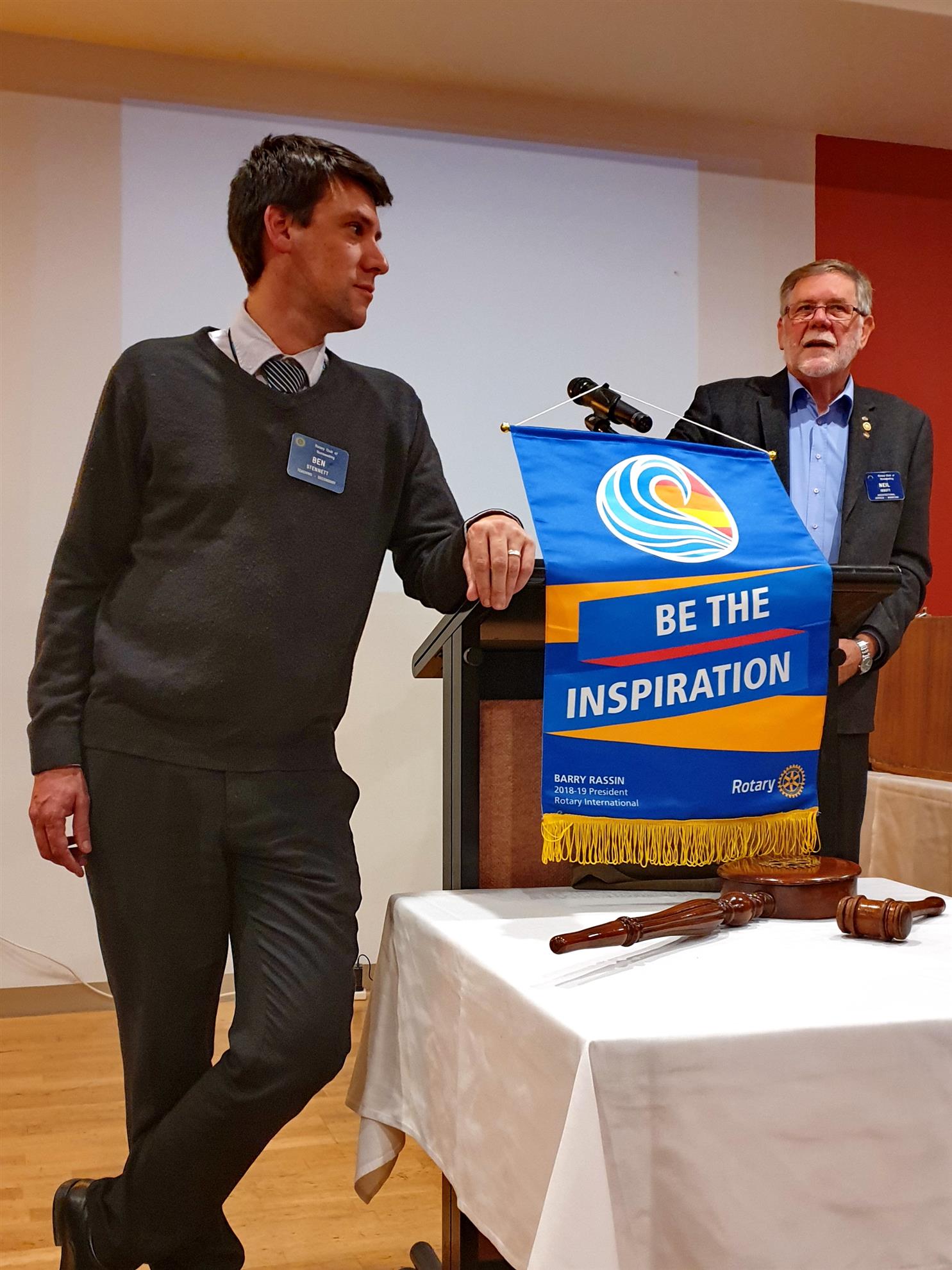
Neil Ibbott introduces Club Member and Whitehorse councillor, Ben Stennett who took us on a fascinating walk through talk on the history of Whitehorse, from the early shire of Nunawading over a hundred years ago through its separation into Box Hill and Nunawading and back to the combined City of Whitehorse.
Telling us about the original white horse dating back to the 1850’s as a statue that adorned the front entrance of the city’s first hotel. It is ironic that the symbol from a hotel became the symbol of a “dry” suburb. The hotel gave its name to the main road through the district.
About how the area was a home of the arts, the original site of the artists’ camp in Box Hill. For about four years in the 1880s, Tom Roberts, Frederick McCubbin and Louis Abrahams, caught a train to Box Hill for an idyllic weekend of camping and painting near Gardeners Creek,
Industries in the area including orchards and tiles and bricks, but these declined when the rail through to Ringwood made the land more valuable for housing.
The area was home to the first electric tramway in Southern Hemisphere Box Hill – Doncaster in 1889.
Many of the parks in the city and bear the names of early residents: Walker Park, Antonio Park, Schwerkolt Cottage.
As the area grew Box Hill attained city status in 1927, and in the early 1950’s Nunawading pushed to become a city – requiring a special act of parliament - and in 1954 Shire President Councillor Norman Armstrong (grandfather of club member Ian Armstrong) became the city’s first Mayor.
Of course there was a mention of Australia’s longest running soap opera Neighbours – Ramsey Street, in reality Pin Oak Court, Vermont South, one of the best know street scapes in Australia (locals need to tell the producers of any changes to the outside of their house so it can be written into the script).
In December 1994 the City of Whitehorse was proclaimed by the amalgamation of the former cities of Box Hill and Nunawading

